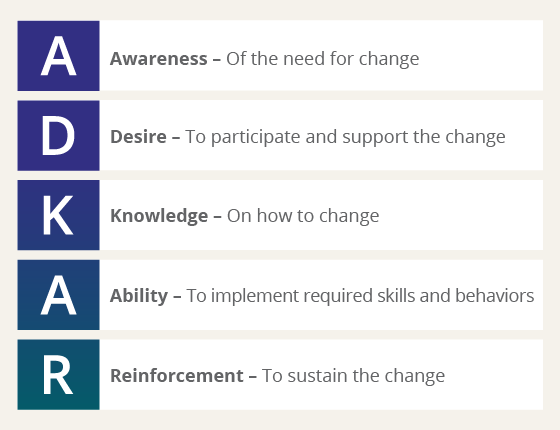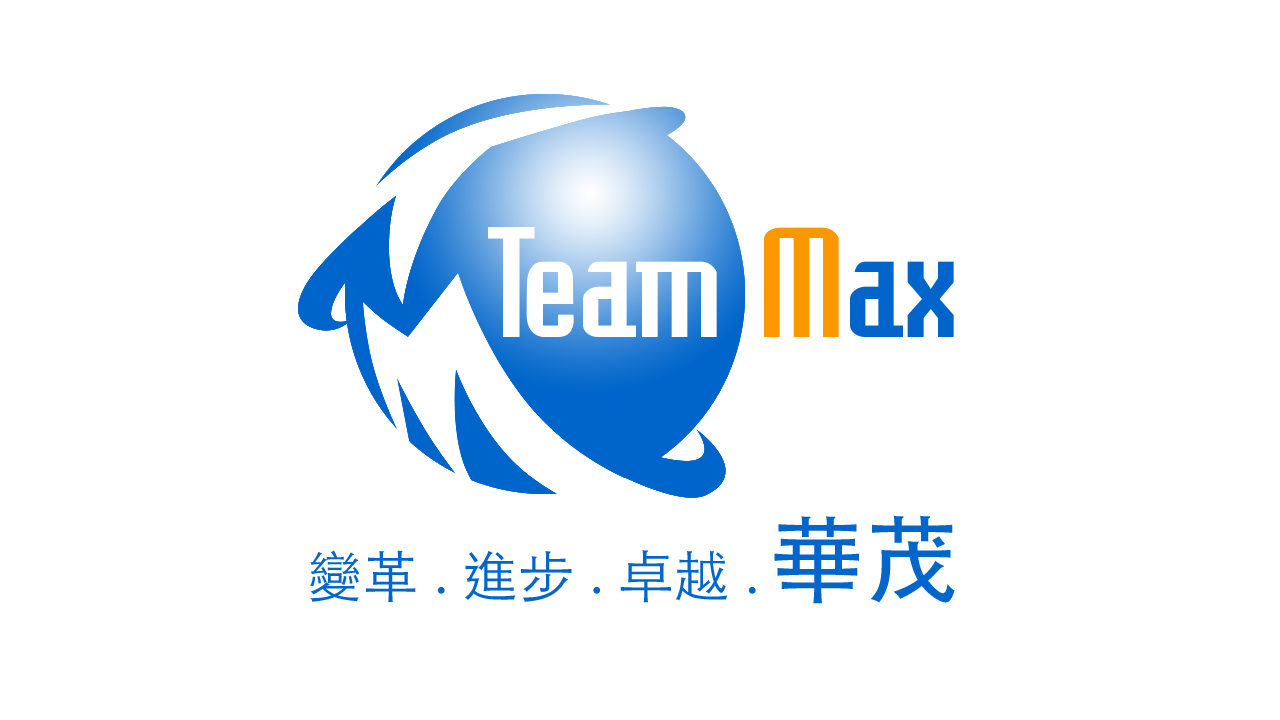What is Change Management and How Does it Work?
When your organization undertakes projects or initiatives to improve performance, seize opportunities or address key issues, they often require changes to processes, job roles, organizational structures, and types and uses of technology.
However, it is actually the employees of your organization who have to ultimately change how they do their jobs. If these individuals are unsuccessful in their personal transitions, or if they don’t learn and embrace a new way of working, the initiative will fail. On the other hand, if employees engage with and adopt changes required by the initiative, it will deliver the expected results.
Change management is the application of a structured process and set of tools for leading the people side of change to achieve a desired outcome.
While all changes are unique and all individuals are unique, decades of research shows there are actions we can take to influence people in their individual transitions. Change management provides a structured approach for supporting people in your organization and helping them move from their current states to their own future states.
When people talk about change management, they may be referring to the competency itself or the change management process. In both cases, change management occurs on three levels:
Individual Change Management
While it’s a natural psychological and physiological human reaction to resist change, we are actually quite resilient creatures. When supported through times of change, we can be wonderfully adaptive and successful.
Individual change management requires understanding how people experience change and what they need in order to change successfully. It also requires knowing just how to help them make the transition. What messages do people need to hear? When should they be sent and who should they come from? When is the optimal time to teach someone a new skill? How do you coach people to demonstrate new behaviors? And what makes changes “stick” in someone’s work? Individual change management draws on disciplines like psychology and neuroscience to apply actionable frameworks to individual change.
After years of studying how individuals experience change and what influences them during times of change, Prosci developed the ADKAR Model for individual change. Today, it is one of the most widely used change models in the world. ADKAR is an acronym for the five outcomes a person must achieve to move through the individual change process successfully: Awareness, Desire, Knowledge, Ability and Reinforcement.

Organizational or Initiative-based Change Management
While all change happens at the individual level, it is often impossible for a project team to manage change on a person-by-person basis. Organizational change management provides us with the steps and actions to take at the project or initiative level to support the hundreds or thousands of individuals who are impacted by a project.
Organizational change management involves first identifying the groups and people who will need to change as the result of the project and the ways each will need to change. Organizational change management then involves creating a customized plan for ensuring impacted employees receive the awareness, leadership, coaching and training they need in order to change successfully. Driving successful individual transitions should be the central focus of the activities in organizational change management.
Organizational change management complements to your project management efforts. Project management ensures that your project’s solution is designed, developed and delivered. Change management ensures that people effectively engage, adopt and use your project’s solution. When integrated effectively, the two disciplines create a Unified Value Proposition.
When managing change at the organizational/initiative level, the process should bridge the gap between individual change management and organizational change management. The Prosci 3-Phase Process is a key component of the overall Prosci Methodology, and is powered by research and tools for applying change management at the organizational/initiative level.
Enterprise Change Management Capability
Enterprise change management is an organizational core competency that provides competitive differentiation and the ability to effectively adapt to the ever-changing world. An enterprise change management capability means effective change management is embedded into your organization’s roles, structures, processes, projects and leadership competencies. Change management processes are consistently and effectively applied to initiatives, leaders and people managers have the skills to guide their teams through change, and employees know what to ask for in order to be successful.
The result of having an enterprise change management capability is that people and teams are equipped to embrace change of all shapes and sizes quickly and effectively. These organizations are more agile—they respond quickly to market changes, embrace strategic initiatives, and adopt new technologies with less productivity impact. In short, they make adopting change part of how the organization works. Obviously, this capability does not happen by chance. Building enterprise change capability is an investment and a journey that requires a strategic approach and intentional process to embed change management across the organization.
Thrive Through Change
All change happens one person at a time, whether at the individual level, the organizational/initiative level, or as an enterprise change management capability. Understanding what change management is gives you a glimpse into the discipline, but there is so much more to learn about the people side of change. To understand why change management is so important, we encourage you to keep exploring and learning. Change is complex, global and ever-present today—and change management helps you and your organization make the most of it.





